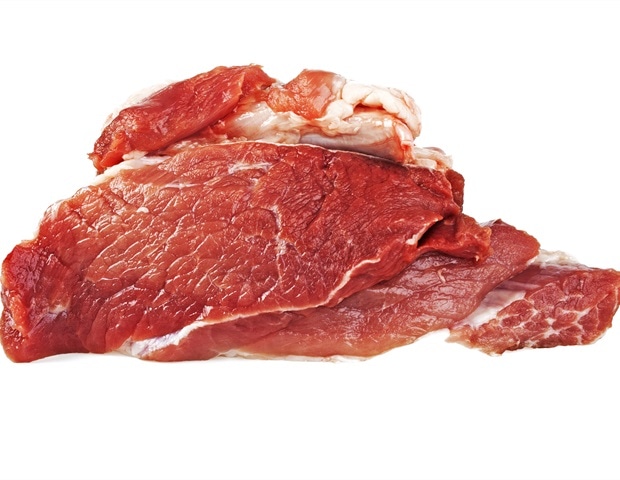Most mammals naturally produce a carbohydrate known as Neu5Gc -; humans do not. However, when we eat red meat, animal Neu5Gc is incorporated in our tissues. As the carbohydrate builds up, our immune systems treat Neu5Gc as a foreign invader, generating antibodies against it. That’s why red meat-rich diets are associated with chronic inflammation and related diseases, such as colon cancer and atherosclerosis.
Researchers at University of California San Diego School of Medicine recently discovered how gut bacteria employ enzymes to strip our cells of their Neu5Gc content so they can feast on underlying sugars, and in doing so, release the carbohydrate into the bloodstream.
The study, published September 23, 2019 in Nature Microbiology, introduces the possibility of using these bacterial enzymes, called sialidases, to clear Neu5Gc from our tissues and potentially remove the carbohydrate from red meat before it’s consumed.
It’s our hope that this approach could be used as a sort of probiotic or prebiotic to help reduce inflammation and the risk of inflammatory diseases -; without giving up steak.”
Karsten Zengler, PhD, professor of pediatrics and bioengineering, UC San Diego and senior author
Scientists have known for decades that colon cancer and atherosclerosis are more common in people who eat a lot of red meat, but not in non-human carnivores. Neu5Gc was implicated as the link between red meat consumption and these human diseases in previous studies by study co-author Ajit Varki, MD, Distinguished Professor of Medicine and Cellular and Molecular Medicine at UC San Diego School of Medicine, and colleagues. They showed that dietary Neu5Gc promotes inflammation, tumors and atherosclerosis in Neu5Gc-deficient (humanized) mice.
In their latest study, Zengler’s team used similar humanized mice (mouse models that have been genetically modified to reflect human biology in some way) to determine how diet influences the makeup of the microbiomes -; communities of microbes, particularly bacteria -; living in the gut. The mice were fed either an Neu5Gc-rich red meat diet or one of two control diets that lacked the carbohydrate.
Overall, the red meat-like diet was associated with less bacterial diversity in the mouse gut microbiomes. Yet there were several bacteria types that were more abundant in the guts of the Neu5Gc-fed mice than the mice that didn’t consume the meat-related carbohydrate. One of these was Bacteroides, a type of bacteria known for surviving on carbohydrates.
More specifically, a Bacteroides enzyme was especially plentiful in the Neu5Gc-fed mice -; a new type of sialidase that cleaves Neu5Gc off of cells.
To determine how the mouse results might translate to humans, Zengler originally hoped to conduct a study in which people would eat a vegetarian diet for two months, then switch to meat consumption for two months, all while the team tracked how their gut microbiomes and sialidases changed. Instead of launching such a study, which would have been costly, Zengler found a naturally occurring experiment in the lifestyle of the Hadza, an indigenous hunter-gatherer group that lives in a remote region of Tanzania, in East Africa. In the dry season, the Hadza hunt and eat meat. In the wet season, they can’t hunt and rely instead on a diet primarily of berries and honey.
Other research groups have previously studied the Hadza and their microbiomes. Examining publicly available genomic data from Hadza gut bacteria over time, Zengler’s team noticed that Bacteroides containing the sialidase gene were at least twice more abundant during the dry (meat-eating) season, compared to the wet season.
But just because sialidase genes are present doesn’t necessarily mean they’re also active. So researchers synthesized the Hadza bacterial sialidase gene and produced the enzyme in the lab. The resulting sialidase was active and preferred non-human Neu5Gc over similar human carbohydrates.
Zengler then took the study a step further: to the grocery store. His team bought steak and pork sausage from a local store and brought it back to the lab. They rubbed their lab-made sialidase on the meat and, sure enough, most of the Neu5Gc came right off.
“The approach isn’t perfect yet -; the sialidase enzyme prefers to cleave Neu5Gc, but it still cleaves a bit of a similar human carbohydrate,” said Zengler, who is also a faculty member in the Center for Microbiome Innovation at UC San Diego.
He and his team are now working to optimize the enzyme to increase its specificity. The team also wants to explore methods to mass produce the enzyme and further explore its potential for preventing inflammation and inflammatory diseases.
Zaramela, L.S. et al. (2019) Gut bacteria responding to dietary change encode sialidases that exhibit preference for red meat-associated carbohydrates. Nature Microbiology. doi.org/10.1038/s41564-019-0564-9.
